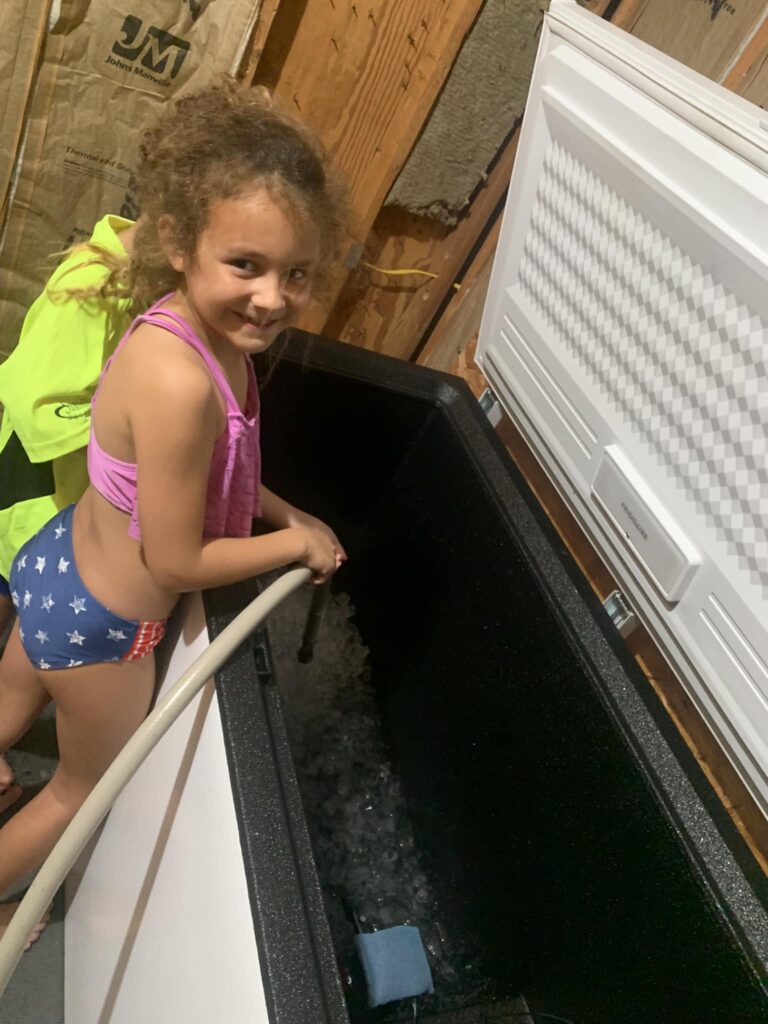Kids & Cold Plunges- Keep Them Safe & Strong!
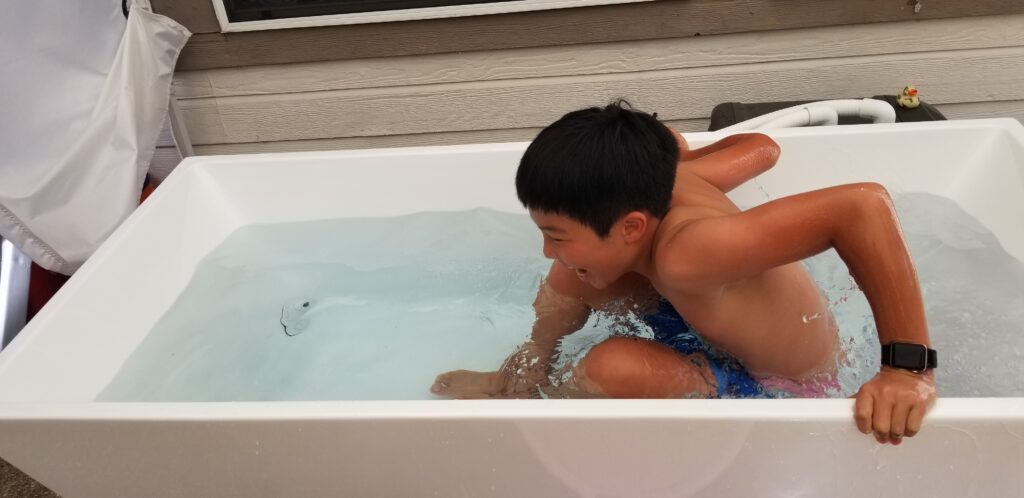
Overview
Having a regular cold plunge practice can have amazing health and other life-changing benefits. Children are naturally curious about what their parents are doing- especially when it is something unique and different like getting into an ice bath or cold plunge. As parents, we want to encourage our child’s curiosity and courage, and cold water is a great way to expand both.
At the same time, we want to keep our children safe, without having them be fearful.
My daughter (who is nine as of 2022) has been watching me do cold water immersion exercises since before she could walk. So, as a father, I’d like to share these safety tips with you. BTW- they apply to adults too.
Three key risks come with a DIY cold plunge: electrical shock, drowning, and suffocation. Parents who practice cold water immersion are rightfully concerned about the safety of their children.
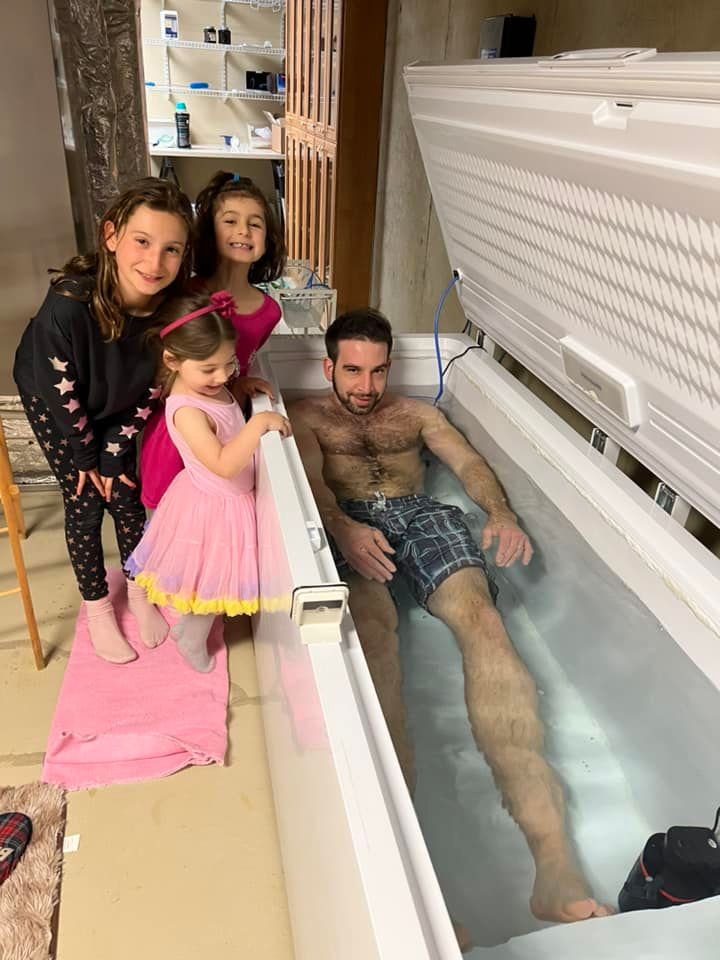
Keeping your children safe is essential whether you have a DIY or plug-and-play cold plunge. After we cover basic safety concerns and what to do about them, we will give discuss tips for when your child is ready to get into the cold water.

Keeping Safe From Electric Shock
One question that comes up frequently is whether or not you can get electrocuted in a chest freezer cold plunge. After all, you are filling a major appliance with water. While there has been some debate from a theoretical perspective,
I have talked with more than eight electricians (in Australia, they are called a sparky) and linemen worldwide. They all have the same message. There is one simple, easy way to be safe: isolate! And that means unplugging the chest freezer before you get in the water, as well as other equipment such as pumps, filters, ozone, UV, etc.
Some people set up smart switches, GFCI, breakers, etc. These are good backups but do not rely on a power switch or any other mechanical or electrical equipment to keep you safe. This equipment can and does fail. Your precious life is not worth that risk. Unplug it every time before you get in. Only unplug it after you get out and have completely dried yourself off.
Create a solution to help you remember to unplug the chest freezer each time before you get in. You can make a sign, or place the power cord over the lid, making it impossible to open without unplugging first.

Do not keep other appliances or tools plugged in near the area where there may be water on the floor.
Water Safety – Drowning Prevention
Most children have a natural aversion to cold water. That said, drowning is considered to be an involuntary cause of death.
Stats about drowning are not tracked very well by one official government website. However, according to StorDrowningNow.org:
- Drowning is the #1 leading cause of death in children ages 1-4
- 23% of child drownings happen during a family gathering near a pool
- 87% of drowning fatalities happen in home pools or hot tubs for children younger than 5. Most take place in pools owned by family or friends.
- Children 5 to 17 years old are more likely to drown in natural water, such as ponds or lakes.
As with swimming pool and hot tub safety, the number one thing is to limit access. Keep your cold plunge covered and if possible, keep the lid locked. We will talk more about that in the next section.
The best practice is limiting access to the area where you have your cold plunge. For example, lock the room/garage or set up a portable child play area fence with a locked gate around the chest freezer.
Don’t scare your children or give dire warnings. Instead, cultivate respect for the cold water.
My daughter was four when I built my chest freezer cold plunge. I let her know the lid can only open when mom or dad are around.
She loved counting me down to get in and enjoyed putting her fingers in the water. I would tell her, “You are my safety buddy, and I only get in the water when I have a safety buddy around.”
Before or after you get in, let them touch the water, and ask them if they want to get all the way in like Mom or Dad.
They will probably say “No!” until they reach a certain age. My daughter started putting her fingers in my containers with ice-cold water for feet and hands exercises before she could crawl.
When asked if she wanted to do cold water training, she very clearly said, “I like warm training.”
She did not express interest in getting fully in the cold water until she was around seven.
Here is a nonprofit website with information about water safety for parents and caregivers to prevent drowning:
Keeping the Lid Secure
In addition to drowning, if you have a DIY chest freezer cold plunge, there is the added concern about children getting locked inside of a chest freezer and suffocating. Some adults have this concern for themselves as well. “What if the lid accidentally closes when I’m inside?”
Before 1956, reports of children suffocating inside appliances were a global issue. It was due to the way the doors latched and locked automatically when closed and could only be opened from the outside. Children playing with discarded appliances could be trapped inside and suffocate. The Refrigerator Safety Act of 1956 required appliance manufacturers to change how appliance doors stayed shut.
If a chest freezer lid is closed now, it can only lock by turning the mechanism upward (defying gravity) or with a lockbox with a spring mechanism that someone must push inward for the key to turn to the locking position.
There is no way for a modern chest freezer to lock accidentally.
As for the lid closing, the hinges on most chest freezers are pretty strong, and unless the chest freezer has old worn out or broken hinges, the lid should stay open and not close until you push or pull it downward.
If your chest freezer hinges have given out, you can connect a small eyehook to the lid with a short chain, rope, or bungee cord secured to the wall to keep it open.
The Problem With External Locks
Not all chest freezers have a lock; if they do, some parents want an extra level of protection, so they have installed a padlock on the lid. I know the external padlock is well-intentioned, but it is definitely *not* recommended because it essentially returns the chest freezer to the pre-1956 dangerous design.
If a child climbs in and the kid closes, the hasp on the lock can prevent it from being opened from the inside.

A Florida news report in 2019 told of three children under six dying after being trapped inside a chest freezer with a hasp installed on the outside.
This would not have happened if somebody had not installed the external lock.
Also, one child could lock another inside and not be able to open the lock.
A better solution would be to secure the lid with a strap (tie-down) or rope around the entire thing: front, over the lid, down, under, and up. Tying the rope around the closed lid prevents accidental lock-ins. You could also use a strap with a buckle, like the ones used in camping or on backpacks.
Encouraging Your Child With Cold Water Immersion
Now that we have addressed physical safety let’s talk about emotional safety.
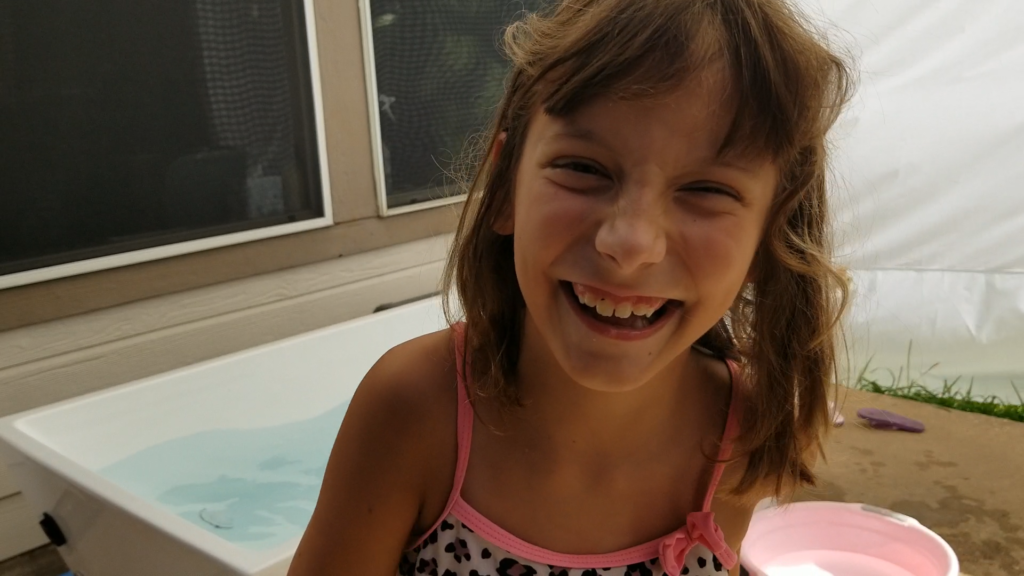
When is a child ready to try cold water immersion? They will let you know! As mentioned, have them be an active part in supporting your practice. Let them know what you are feeling and thinking and how you feel before, during, and after.
The guidelines with kids and cold water is “Always encourage, never force.”
Children generally do not tolerate cold water as well as adults, so another option is to start with a warmer temperature in the 50 – 60F (10-16C) range.
My daughter was not tall enough to climb in or out by herself. I told her she was 100% in control. I would only put her in when she said “1 – 2 – 3 – GO!” and pull her out immediately when she said “OUT!” Work out the communication in advance and honor your agreement. That will build a tremendous amount of trust and respect.
No matter how long they stay in, acknowledge their effort and process, not the result.

Here are seven tips on how to encourage kids constructively. For more information, see the website listed below. I don’t have any financial relationship with this company and did receive permission to share these 7 tips.
https://www.parentingforbrain.com/words-of-encouragement-for-kids/
1. Praise sincerely and honestly
2. Be specific and descriptive
3. Praise your child’s efforts and the process, not their achievement or ability
4. Avoid controlling or conditional praise
5. Avoid making comparisons to siblings or other children
6. Avoid easy-task praise and over-praising
7. Be spontaneous
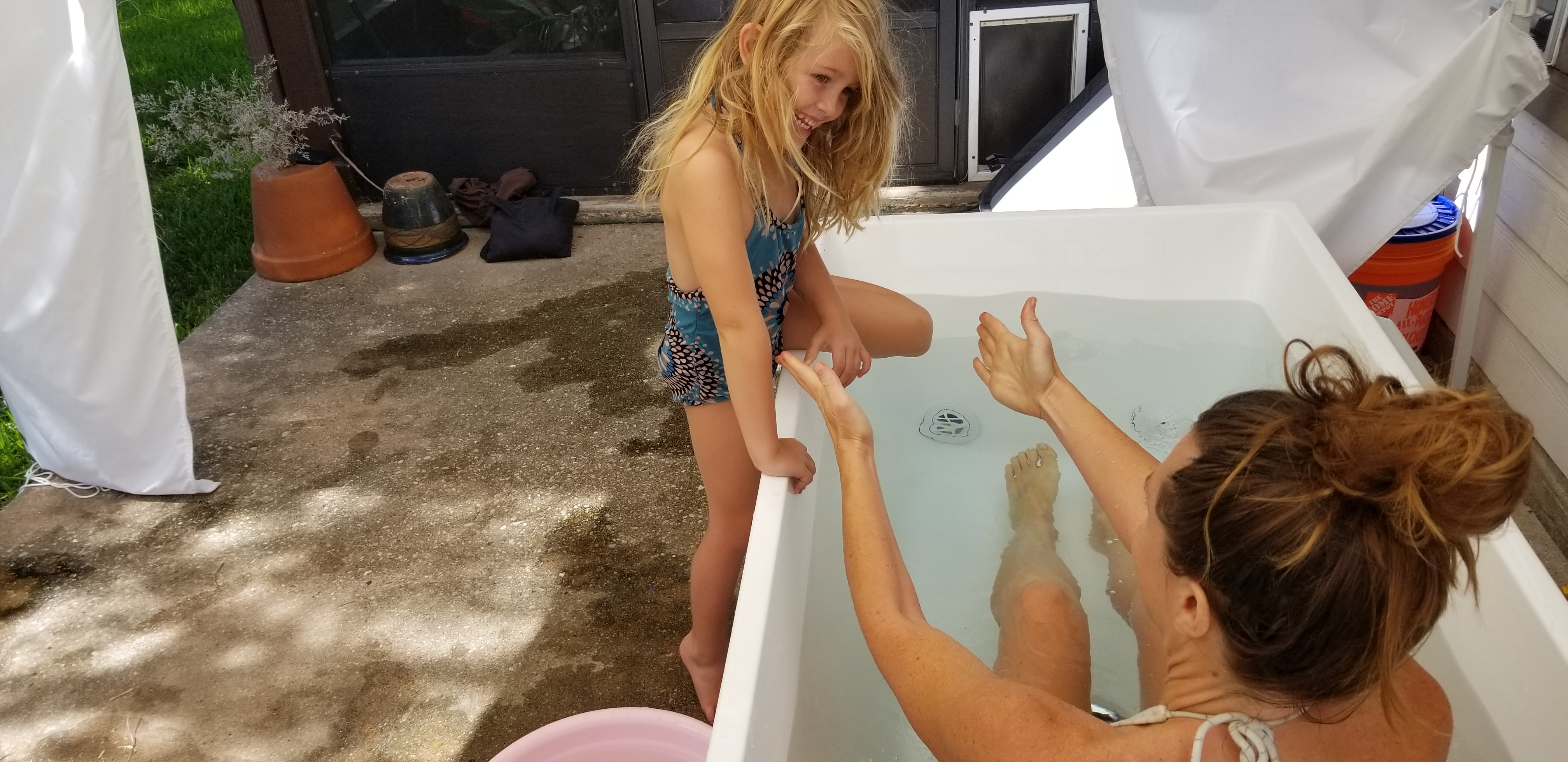
Conclusion
With a few common-sense ground rules and strategies in place, you can not only keep your child (and yourself) safe around your cold plunge but set an excellent example for them to reap the benefits of doing something hard. It can be another way to connect and grow with your child.
Happy cold plunging!
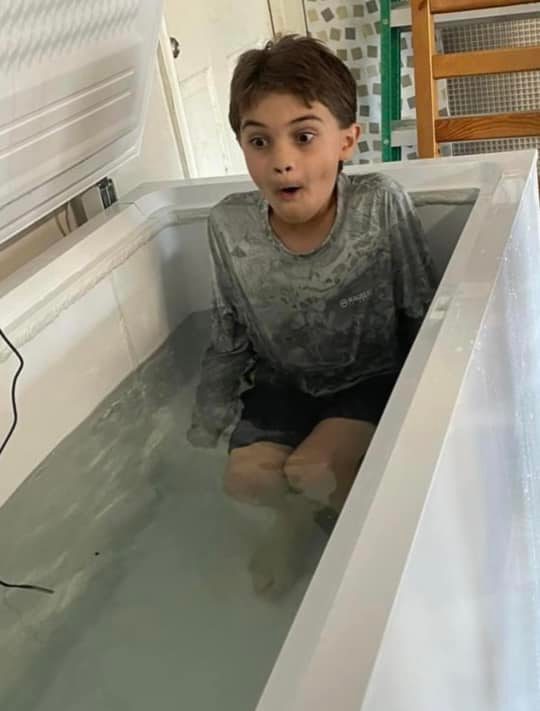
Comment From a Parent
I received this comment from a parent in my Facebook group after she read this article.
“Thanks for addressing kids & cold plunges John! This group has been a great moral support for me, knowing other parents are doing the same as us, letting their kids “experiment” with cold plunges, when the kids are happy and ready too! I wasn’t sure about sharing that my kids were plunging until I noticed the posts of other parents letting their kids have a go. The article will be helpful to new “cold plunger families.'”
– Kristina Smith Rogovoy
